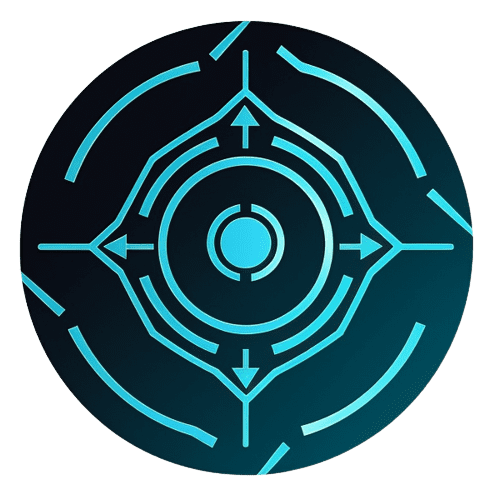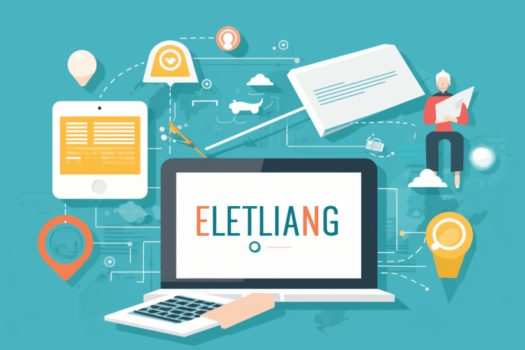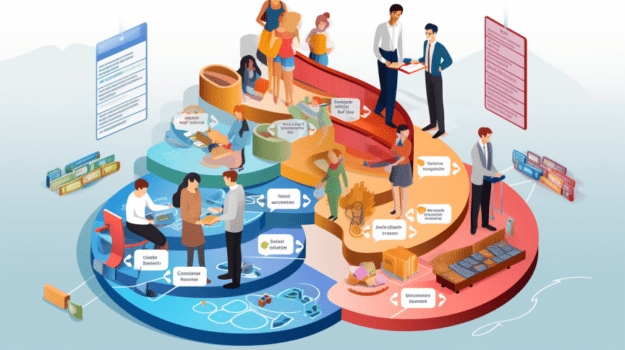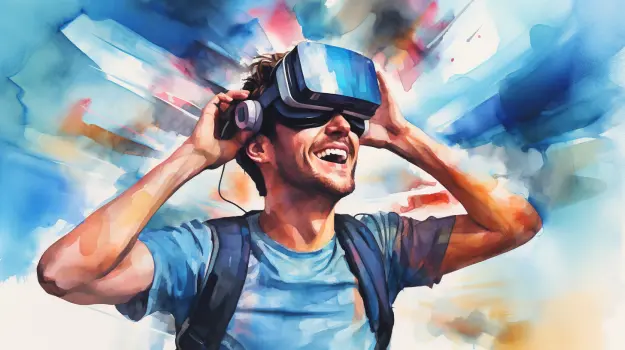Introduction
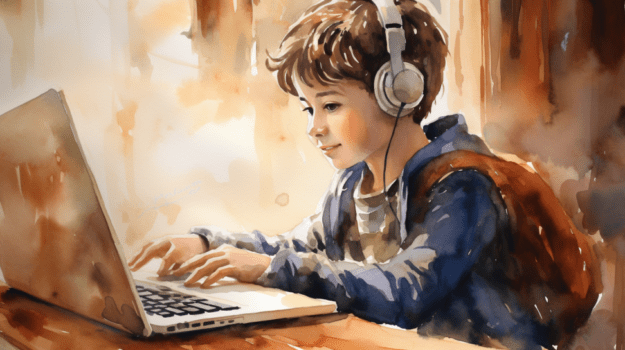
The rise of e-learning and its benefits
E-learning has revolutionized the way education is delivered and consumed. With the advent of technology, learning opportunities have expanded beyond the traditional classroom, allowing individuals to access education from anywhere in the world. This article aims to explore the various aspects of e-learning and its transformative impact on education.
Changing the face of education
E-learning revolution E-learning has brought about a significant change in the education landscape. It offers flexible learning options, interactive modules, and personalized experiences, all of which contribute to a more engaging and effective learning journey. In today’s digital age, e-learning has become a catalyst for educational transformation, enabling individuals to unlock their full potential.
Understanding E-Learning

Definition and key characteristics of e-learning
E-learning, also known as electronic learning, refers to the delivery of educational content through digital platforms and devices. It encompasses a wide range of technologies, such as online courses, virtual classrooms, mobile apps, and gamification, which enhance the learning process and make it more accessible.
Advantages of e-learning over traditional education methods
E-learning offers numerous advantages over traditional education methods. It provides self-paced learning opportunities, allowing individuals to learn at their own convenience. Additionally, e-learning eliminates geographical constraints, making education accessible to a global audience. Moreover, it promotes collaborative learning and personalized experiences, fostering individual growth and engagement.
Dynamic ways e-learning enhances the learning experience
E-learning revolutionizes the learning experience by incorporating dynamic elements that enhance engagement and knowledge retention. Through interactive multimedia presentations, gamified learning paths, and adaptive learning algorithms, individuals can actively participate in their learning journey. This hands-on approach stimulates critical thinking, problem-solving, and creativity, creating a holistic learning experience.
Exploring Diverse E-Learning Platforms

Online courses: Unlocking endless learning opportunities
Online courses have opened up a world of endless learning possibilities. Accredited institutions and reputable platforms offer a wide range of courses across various disciplines, catering to learners of all ages and skill levels. From language courses to professional certifications, individuals can acquire knowledge and skills from the comfort of their homes.
Virtual classrooms: Connecting learners and educators worldwide
Virtual classrooms transcend physical boundaries, connecting learners and educators from different parts of the world. With real-time video conferencing, interactive whiteboards, and collaborative tools, virtual classrooms facilitate live interactions, discussions, and shared learning experiences. This fosters a global community of learners, expanding horizons and promoting cultural exchange.
Mobile apps: Learning on the go at your convenience
Mobile apps have made learning accessible on the go. With just a smartphone or tablet, individuals can access a wealth of educational resources anytime, anywhere. These apps offer bite-sized lessons, interactive quizzes, and progress tracking features, ensuring a seamless and personalized learning experience. Whether it’s language learning, skill development, or exam preparation, mobile apps cater to a wide range of educational needs.
Gamification in e-learning: Making education interactive and engaging
Gamification in e-learning involves incorporating game elements, such as points, badges, and leaderboards, into educational content. This approach transforms the learning experience into an interactive and engaging journey. By leveraging gamified modules, learners are motivated to actively participate, compete, and achieve milestones, resulting in increased knowledge retention and enjoyment of the learning process.
Breaking the Barriers: Accessible Education Anywhere

Overcoming geographical constraints with e-learning
Traditional education often faces challenges due to geographical constraints. E-learning overcomes these limitations by providing opportunities for remote learning. Through online platforms, individuals can access quality education from renowned institutions regardless of their physical location. This inclusivity eliminates the need for relocation and bridges the gap between educational resources and learners worldwide.
Connecting marginalized communities to quality education
E-learning plays a crucial role in connecting marginalized communities to quality education. In regions with limited access to educational facilities, technology-enabled learning provides an alternative pathway to acquire knowledge and skills. By breaking down barriers, including economic and social disparities, e-learning empowers individuals from all backgrounds to pursue education and improve their lives.
Empowering individuals with online education in remote areas
In remote areas where educational infrastructure is limited, e-learning empowers individuals by providing access to online education. By leveraging technology, individuals living in remote areas can overcome the challenges of distance and lack of resources. E-learning platforms enable these individuals to engage in self-paced learning, connect with educators, and tap into a world of knowledge that was once out of reach.
Tailoring Your Learning Experience: Personalization in E-Learning

Personalized learning: Customizing the journey to individual needs
E-learning’s personalized approach tailors the learning journey to individual needs and preferences. By analyzing learners’ strengths, weaknesses, and learning styles, adaptive algorithms create personalized learning paths. This customization ensures that learners receive content, exercises, and assessments that align with their proficiency levels, maximizing learning outcomes.
Adaptive learning: Nurturing student progress with artificial intelligence
Artificial intelligence (AI) plays a pivotal role in adaptive learning. By continuously analyzing learner data, AI algorithms can identify areas of improvement and provide targeted feedback and resources. This real-time assistance nurtures each student’s progress, allowing them to focus on their weaknesses and develop a deep understanding of the subject matter.
Gamified learning paths: Engaging students with interactive modules
Gamified learning paths offer an interactive and engaging approach to education. By presenting learning materials in the form of games, quizzes, and challenges, students are motivated to actively participate and explore concepts in a fun and stimulating manner. This gamification fosters a sense of achievement and encourages students to continually engage with the learning content.
Collaborative Learning in the Digital Space

Virtual group projects and teamwork
E-learning facilitates collaborative learning through virtual group projects and teamwork. Learners can collaborate with their peers from various locations, fostering a diverse and inclusive learning environment. This collaborative approach not only enhances critical thinking and problem-solving skills but also promotes social interaction and the exchange of ideas.
Online discussion forums and peer learning communities
Online discussion forums and peer learning communities provide platforms for learners to engage in meaningful conversations and knowledge sharing. These spaces enable learners to ask questions, seek advice, and contribute their perspectives. In such communities, learners can benefit from the collective wisdom and experiences of their peers, creating a rich and diverse learning environment.
Leveraging social media for educational purposes
Social media platforms offer unique opportunities for educational engagement. By leveraging social media, educators can create virtual learning communities, share resources, and foster student interaction. Social media also enables learners to engage with experts and thought leaders, expanding their knowledge beyond the confines of traditional learning spaces.
E-Learning Tools and Techniques: Unlocking Educational Possibilities

Virtual reality (VR) and augmented reality (AR) in e-learning
Virtual reality (VR) and augmented reality (AR) are transformative technologies that enhance the immersive learning experience. By providing virtual simulations and interactive environments, learners can engage with complex concepts in a visually stimulating and hands-on manner. VR and AR technologies unlock new possibilities in fields such as medical training, engineering, and architecture.
Simulations and interactive learning experiences
Simulations and interactive learning experiences offer a practical and experiential approach to education. By providing simulated real-life scenarios, learners can apply theoretical knowledge in a safe environment. These interactive experiences enable hands-on learning, problem-solving, and decision-making, thereby bridging the gap between theory and practice.
Artificial intelligence (AI) tutors: Advancing individual learning outcomes
AI tutors are intelligent virtual assistants that provide personalized support to learners. By analyzing learner data, AI tutors can identify areas of improvement, offer targeted resources, and provide instant feedback. This individualized attention and support enhance learning outcomes and contribute to a more effective learning experience.
Blockchain technology: Ensuring authenticity and credibility in certifications
Blockchain technology ensures the authenticity and credibility of certifications in e-learning. By creating a secure and transparent system, blockchain enables learners to verify their achievements and credentials. This technology-based verification process establishes trust and credibility, making e-learning certifications valuable assets recognized by employers and institutions.
Big data analytics: Transforming educational insights
Big data analytics in e-learning involves the analysis of large volumes of learner data to gain insights and improve educational outcomes. By analyzing patterns, trends, and performance metrics, educators can identify areas for improvement, tailor learning experiences, and predict learner behavior. Big data analytics empowers educators with valuable insights that shape the future of e-learning.
Advancements in Assessments: Reinventing Learning Evaluation

Online examinations and automated grading systems
E-learning allows for online examinations and automated grading systems that streamline the assessment process. With the help of advanced algorithms and machine learning, these systems can evaluate assessments, provide instant feedback, and generate detailed reports. This automated approach reduces manual effort, promotes consistency, and ensures timely evaluation.
Real-time performance tracking and feedback
E-learning platforms enable real-time performance tracking and feedback for learners. Educators can monitor learners’ progress, identify areas of improvement, and provide targeted guidance. Real-time feedback encourages learners to reflect on their performance, make necessary adjustments, and actively engage with the learning process.
Authentic assessments through e-portfolios and multimedia projects
E-portfolios and multimedia projects provide learners with opportunities to showcase their skills and knowledge in authentic and creative ways. These assessment methods allow learners to demonstrate their understanding through practical applications, presentations, and multimedia content. Authentic assessments promote deeper learning and provide a comprehensive evaluation of learners’ abilities.
Augmenting Traditional Education: Blended Learning Approaches
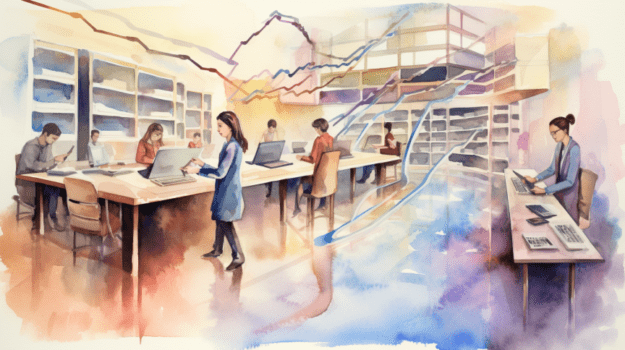
The marriage of traditional and e-learning methods
Blended learning approaches combine traditional face-to-face instruction with e-learning components, creating a hybrid learning experience. This blended approach leverages the strengths of both methods, providing flexibility, personalized learning, and interactive experiences.
Blended learning models and their effectiveness
Various blended learning models, such as the flipped classroom and station rotation, have proven to be effective in improving student outcomes. These models enable students to engage with online materials at their own pace and receive personalized support during in-person sessions with teachers. Blended learning maximizes instructional time, promotes active learning, and fosters student engagement.
Maximizing learning outcomes with blended classrooms
Blended classrooms optimize the learning experience by combining the benefits of face-to-face interaction and e-learning. By integrating digital resources, multimedia materials, and collaborative activities, educators can create a stimulating and inclusive learning environment. Blended classrooms empower students to take ownership of their learning while benefiting from the guidance and expertise of educators.
Democratizing Education: Bridging the Education Gap

Empowering underprivileged students with e-learning
E-learning plays a significant role in empowering underprivileged students by bridging the education gap. By providing free or affordable access to educational resources, online courses, and interactive platforms, e-learning ensures that education is no longer a privilege limited to a few. This empowerment enables underprivileged students to acquire knowledge, skills, and opportunities for personal growth.
Accessibility concerns and bridging the digital divide
E-learning platforms strive to address accessibility concerns and bridge the digital divide. Efforts are made to provide internet connectivity, affordable devices, and localized content to individuals in disadvantaged communities. By overcoming barriers to access, e-learning aims to ensure that everyone, regardless of their socio-economic status, has equal opportunities to learn and succeed.
The Future of E-Learning: Trends to Watch Out For

Artificial intelligence and machine learning in education
Artificial intelligence and machine learning are poised to revolutionize education further. AI-powered algorithms will enable personalized, adaptive, and intelligent learning experiences tailored to individual needs. Machine learning techniques will analyze vast amounts of learner data to identify trends, optimize content delivery, and continually improve educational outcomes.
Virtual reality as a mainstream learning tool
Virtual reality is emerging as a mainstream learning tool that immerses learners in realistic and interactive environments. From virtual field trips to training simulations, VR enhances engagement, retention, and understanding. As VR technologies become more accessible and affordable, they will transform the educational landscape.
Personalized e-learning experiences with adaptive technologies
Adaptive technologies, powered by AI and learning analytics, will continue to shape personalized e-learning experiences. These technologies will adapt to learners’ needs in real-time, offering tailored content, assessments, and interventions. By catering to individual learning styles and preferences, adaptive technologies will maximize learning outcomes and provide a truly customized educational journey.
Rise of micro-learning and bite-sized courses
Micro-learning, which focuses on delivering small, targeted bursts of information, is gaining popularity. Bite-sized courses offer learners the flexibility to learn at their own pace and fit their studies into their busy lives. Micro-learning allows individuals to acquire knowledge in short bursts, promoting efficiency, engagement, and retention.
Overcoming Challenges in E-Learning

Challenges faced by learners in e-learning environments
Learners may face challenges in e-learning environments, such as self-discipline, time management, and technological barriers. Overcoming these challenges requires motivation, self-regulation, and support from educators and peers. By recognizing these challenges and implementing strategies to address them, learners can navigate e-learning successfully.
Combating isolation and fostering community in online education
E-learning can sometimes lead to feelings of isolation due to the lack of face-to-face interaction. Fostering a sense of community is crucial in combating this challenge. Online discussion forums, virtual group projects, and social media communities can create spaces where learners can interact, collaborate, and support each other, fostering a sense of belonging and connectivity.
Ensuring equal opportunities for all learners
E-learning must strive to ensure equal opportunities for all learners. Efforts should be made to address the digital divide, provide inclusive and accessible learning materials, and cater to diverse learning needs. By fostering a culture of inclusivity, e-learning can empower learners regardless of their age, background, or abilities.
Success Stories: Inspiring E-Learning Transformations

Real-life stories of individuals benefiting from e-learning
Numerous success stories showcase the transformative power of e-learning. From individuals acquiring new skills to professionals upskilling and transitioning to new careers, e-learning has opened doors and created opportunities. These stories highlight the impact of e-learning in empowering individuals to achieve their educational and professional goals.
Breakthrough stories in remote education
Remote education has witnessed groundbreaking stories of individuals who have overcome geographical constraints and limited resources. From students pursuing advanced degrees from prestigious institutions to adults accessing vocational training, e-learning has transformed lives and communities. These breakthrough stories demonstrate the far-reaching impact of e-learning in remote areas.
Conclusion: Embrace the E-Learning Revolution

Recapitulation of the benefits of e-learning
E-learning offers numerous benefits, including flexibility, accessibility, personalization, and engaging learning experiences. It has the power to revolutionize education and democratize learning opportunities. By embracing e-learning, individuals can unlock their potential and embark on a transformative educational journey.
Encouragement to tap into e-learning’s potential for personal growth
As the world becomes increasingly digital, it is essential to tap into the potential of e-learning for personal growth and continuous learning. E-learning offers individuals the opportunity to acquire new skills, expand their knowledge, and adapt to changing environments. By embracing e-learning, individuals can stay ahead in their respective fields and make meaningful contributions.
FAQs: Common Queries about E-Learning

What hardware and software do I need for e-learning?
To engage in e-learning, individuals typically need a device such as a computer, laptop, or smartphone with internet access. Additionally, specific software or learning management systems may be required depending on the e-learning platform or course being undertaken.
What hardware and software do I need for e-learning?
For most e-learning courses, you’ll need a stable internet connection and a device like a computer, laptop, tablet, or even a smartphone. The exact software can vary. Some courses might be browser-based, so any up-to-date web browser would work. Others might require specific apps or software programs, which will usually be indicated on the course description. Also, tools like a webcam and a microphone can be useful for interactive sessions or virtual classes.
How can I stay motivated while learning online?
Staying motivated in an online learning environment can be a bit challenging but quite achievable. Set clear, achievable goals for what you want to learn. Break down your learning into manageable chunks and create a routine or schedule. Engaging with others can also boost your motivation, so join discussion forums, participate in online group activities, and don’t shy away from asking questions. Remember to reward yourself for your progress, and most importantly, choose courses that pique your interest!
Are online degrees as valuable as traditional degrees?
Absolutely! The value of an online degree has significantly grown over the past few years. Employers increasingly recognize the validity and worth of online degrees. The key is to ensure your online degree is from an accredited institution. What matters most is the knowledge and skills you acquire, and online courses can offer just as rigorous and comprehensive an education as traditional ones.
Can e-learning replace traditional education completely?
E-learning has a host of benefits like flexibility and accessibility, but it’s unlikely to replace traditional education entirely. Many learners value face-to-face interaction and hands-on experiences that a physical classroom provides. Instead, the future likely lies in blended learning, combining the best of both worlds—online and in-person instruction.
Are e-learning courses self-paced, or do they follow a schedule?
This depends on the specific course and the platform providing it. Some e-learning courses are self-paced, allowing you to start and finish them at your leisure. Others might follow a specific schedule, similar to a traditional classroom setting, particularly those with a cohort of learners moving through the content together.
How can I ensure the quality of an online course before enrolling?
Research is key. Check the qualifications and reputation of the institution or organization offering the course. Look for reviews or testimonials from other learners. Also, check if the course offers certificates of completion or other credentials, and if these are recognized in your industry or field.
Is there a way to interact with teachers and other students in an online course?
Yes, many online courses offer various ways to interact with instructors and fellow learners. This can be through discussion boards, group projects, video conferencing, or even social media groups created for the course. Interaction may not be as immediate or spontaneous as in a physical classroom, but the opportunity for collaboration and discussion is still very much present in the e-learning environment.
